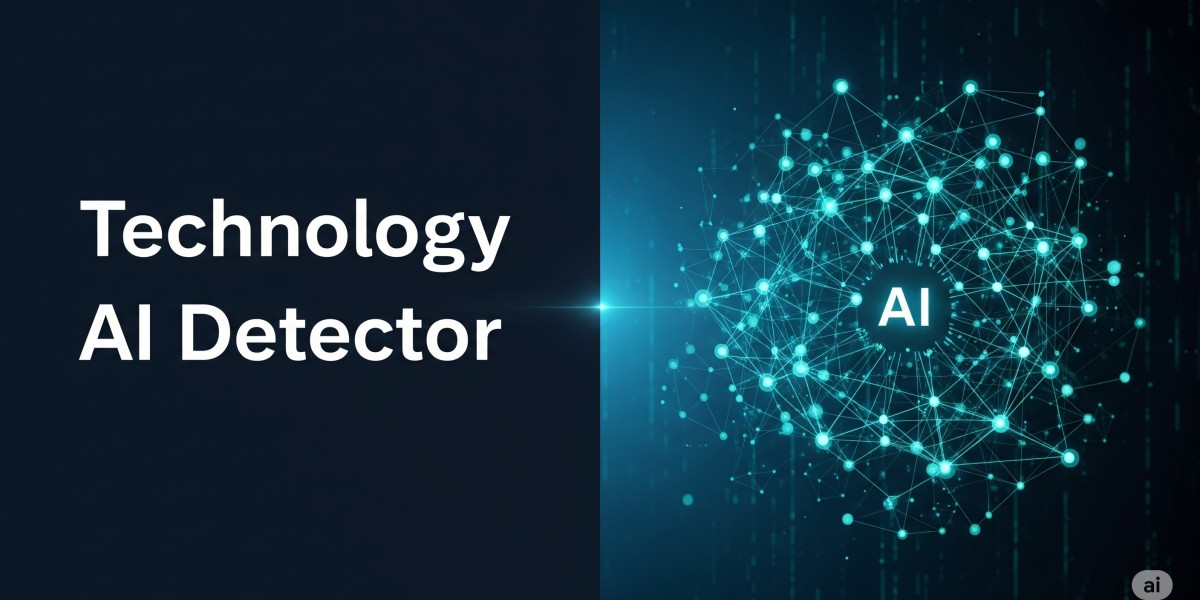In today’s digital world, artificial intelligence is everywhere. From chatbots and virtual assistants to automated writing tools, AI has completely transformed the way we create and share content online. But with this new technology comes a big question — how do we know if something on the internet was written by a human or by AI? The answer lies in a powerful tool known as an AI detector.
An AI detector is a smart online system designed to identify whether a piece of text was written by a person or generated by artificial intelligence. As AI writing tools like ChatGPT, Jasper, and others become more popular, detecting AI-generated content has become a major concern for teachers, publishers, and businesses that depend on originality and trust.
How Does an AI Detector Work?
An AI detector doesn’t just guess — it uses complex algorithms and linguistic analysis to make its decision. When you paste your text into an AI detector, the system scans it line by line, looking for patterns that are typical of machine-written text.
AI-generated content often follows consistent sentence structures, uses balanced vocabulary, and has a certain smoothness that feels slightly unnatural. Human writing, on the other hand, has emotion, rhythm, and small imperfections that reflect real thought.
By studying word choices, tone, sentence variation, and coherence, the AI detector calculates a probability score showing how likely the text is to be AI-generated. Some advanced detectors even use machine learning and deep neural networks to compare your writing to millions of known AI samples across the web.
Why Are AI Detectors Important?
AI detectors play a crucial role in maintaining integrity on the internet. As more people rely on AI tools to create blogs, essays, and marketing content, it’s becoming difficult to separate human creativity from machine automation.
1. For Education:
Teachers and universities now use AI detectors to ensure students are submitting their own work. These tools help preserve academic honesty and encourage real learning.
2. For Journalism and Blogging:
Online media relies on credibility. Publishers use AI detectors to verify that articles reflect genuine human perspective and are not just generated by algorithms chasing clicks.
3. For Businesses and SEO:
Brands that depend on content marketing use AI detectors to make sure their writers produce authentic, engaging text that connects emotionally with readers. Search engines also favor original content — another reason businesses use detectors to stay competitive.
AI Detectors on the Internet
There are many AI detectors available online, each offering unique features. Some popular ones include GPTZero, Originality.ai, and Sapling AI Detector. These tools are often web-based — you simply paste your content, and the system instantly analyzes it.
Many detectors now integrate directly into web browsers or content management systems, making it easier than ever to check for AI-generated writing before publishing. Whether you’re a student submitting an assignment or a blogger preparing an article, these detectors help ensure that what you share online remains authentic.
Limitations of AI Detectors
Although AI detectors are powerful, they aren’t perfect. Some high-level AI models produce writing that feels almost indistinguishable from human text. In such cases, the detector might struggle to give a clear result.
Additionally, creative human writers who use very structured or balanced language may sometimes be mistaken for AI. That’s why it’s important to use AI detectors as guides, not as absolute judges. They are tools to support transparency, not to replace human understanding.
The Future of AI Detection
As artificial intelligence continues to evolve, AI detectors will also grow smarter. Future versions may not only identify AI-written content but also explain how much of the text was AI-generated and which specific parts seem artificial.
These next-generation tools could even help writers improve their style by offering suggestions to make their writing sound more natural and authentic. In the long run, AI detectors will become essential in keeping the internet honest and preserving the true voice of humanity amid a world of automation.
Conclusion
A KI detector is more than just a piece of technology — it’s a symbol of authenticity in the digital era. On the internet, where content can be created by anyone or anything, these detectors act as the ultimate guardians of truth and originality.
As artificial intelligence continues to advance, AI detectors ensure that we can still recognize and appreciate the difference between human creativity and machine efficiency. In short, they remind us that while AI can write — only humans can truly connect, inspire, and create meaning.








